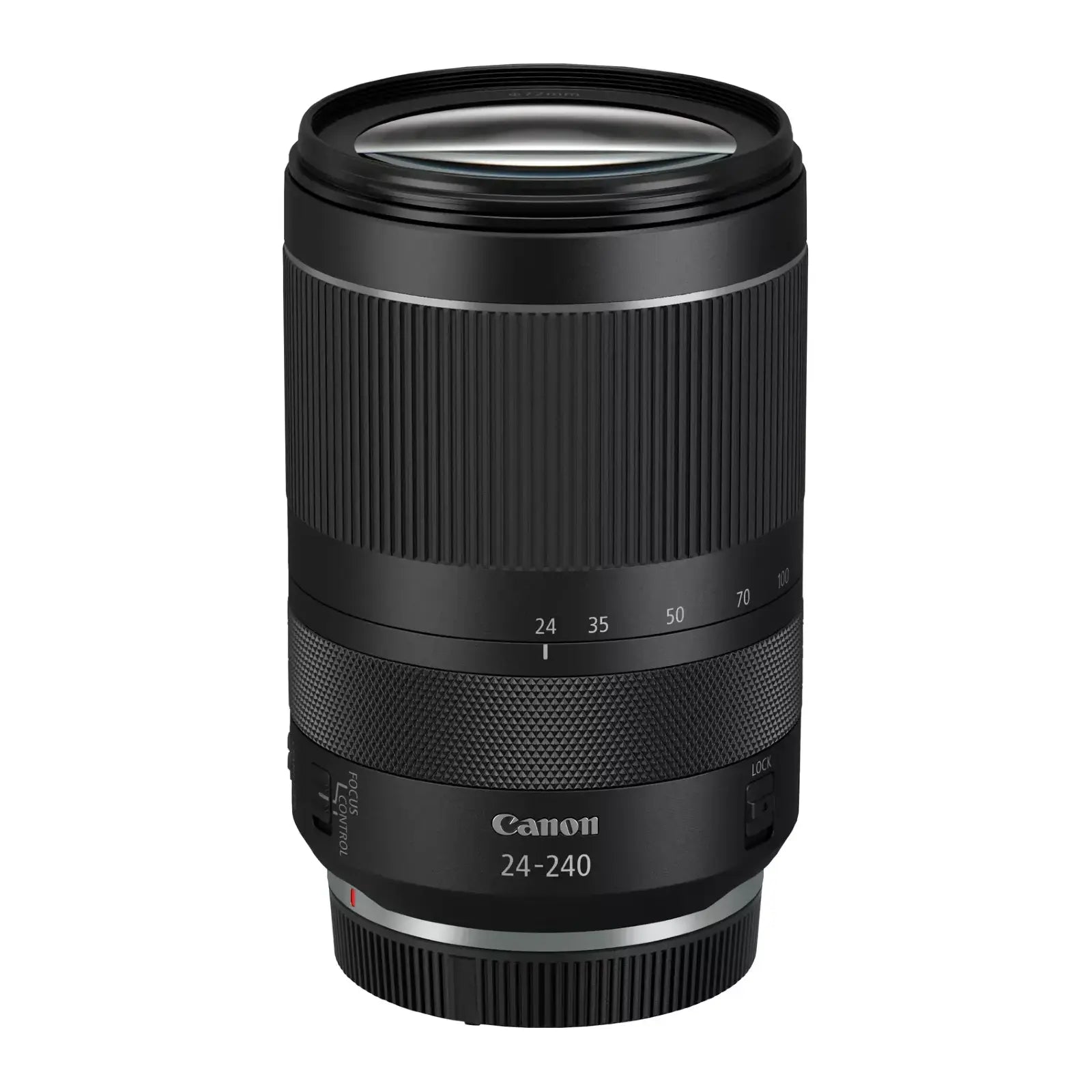What we think...
Product Description
Canon RF 24-240mm f/4-6.3 IS USM Lens: Unleash Creativity with Versatility and Precision
The Canon RF 24-240mm f/4-6.3 IS USM Lens is the ultimate tool for photographers and videographers who demand flexibility without compromising image quality. Designed exclusively for Canon's cutting-edge EOS R system, this lightweight, portable 10x zoom lens covers an impressive focal range, making it perfect for everything from stunning wide-angle landscapes to dynamic portraits, action-packed sports, and detailed wildlife photography.
Whether you're capturing unforgettable moments while travelling or seeking an all-in-one solution for your creative projects, the RF 24-240mm f/4-6.3 IS USM is engineered to deliver exceptional full-frame image quality, robust performance, and intuitive handling.

Key Features That Set the Canon RF 24-240mm Apart
- Exceptional 10x Zoom Range (24-240mm): Seamlessly transition from wide-angle vistas to telephoto close-ups, capturing every detail and nuance with ease.
- Advanced Nano USM Autofocus: Experience near-silent, lightning-fast focusing that’s perfect for still photography and silky-smooth for video recording.
- Five-Stop Image Stabilisation: Say goodbye to blurry shots! Canon's advanced IS technology ensures sharp images even in low light or at extended zooms.
- Lightweight and Travel-Ready: Weighing just 750g, this lens is built to be portable without sacrificing performance, making it an ideal companion for adventures.
- Circular Seven-Bladed Aperture: Create beautiful, creamy bokeh to make your subject stand out with professional finesse.
- Customisable Lens Control Ring: Tailor your workflow by assigning critical functions, like aperture or ISO, directly to the lens.
- Precision Aperture Control: Enjoy clickless 1/8-stop adjustments for smooth transitions, ideal for cinematic video creation.
- Robust Build for EOS R: Fully optimised for the RF mount, this lens unlocks the full potential of the EOS R system, including seamless integration with the Digital Lens Optimizer.

Why Choose the RF 24-240mm f/4-6.3 IS USM?
Versatility Meets Creativity
This single lens covers virtually every focal length you’ll need, eliminating the hassle of switching lenses in the middle of the action. From capturing wide-open landscapes to zooming in on distant subjects, this lens empowers your creativity in every situation.
Travel Light, Shoot Big
The RF 24-240mm lens combines portability with a vast focal range, making it the perfect travel companion. At just 750g, you’ll enjoy spontaneity and mobility without sacrificing performance.
Pin-Sharp Full-Frame Quality
Canon’s optical engineering ensures crystal-clear results across the entire zoom range. The built-in Image Stabiliser minimises camera shake, enabling you to capture sharp, detailed images even in challenging lighting conditions.
Perfect for Photography and Videography
With its Nano USM motor, this lens offers rapid, precise autofocus for stills and smooth transitions for professional-looking video. Whether you’re photographing wildlife or creating cinematic films, this lens adapts effortlessly.

Designed for the Canon EOS R System
The RF 24-240mm lens is a native RF mount lens, crafted to optimise the performance of the innovative EOS R system. With fast, nearly frame-wide autofocus and advanced lens correction via the Digital Lens Optimizer, this lens ensures every shot is as sharp and vivid as possible.

Who Is This Lens For?
- Travel Photographers: Its versatility and portability make it ideal for capturing everything on the go.
- Landscape Enthusiasts: Wide-angle capability allows for stunning, sweeping vistas.
- Portrait Photographers: Frame-filling close-ups with beautiful bokeh are effortless.
- Wildlife and Sports Shooters: The extended zoom range and fast autofocus are perfect for capturing distant action.
- Videographers: Silent operation, smooth focus, and precise aperture control make it a dream for video creators.

Invest in the Canon RF 24-240mm f/4-6.3 IS USM Lens Today
Elevate your photography and videography with this all-in-one powerhouse. Whether you’re an enthusiast exploring the full-frame world or a seasoned professional seeking versatility in a single lens, the Canon RF 24-240mm f/4-6.3 IS USM delivers unmatched performance, portability, and precision.
Click below to order now and start capturing your world with unparalleled flexibility and creativity!
For full specifications click Here
Try The Kit - Canon Test Drive

Canon Test Drive – Try Before You Buy with Free Next Day Delivery
Test selected Canon gear with a 48-hour free trial or hire for up to 7 days at a low cost. Book anytime via the 24/7 live system.
How it works:
-
Book your kit – Choose dates and reserve online.
-
Pay a refundable deposit – Fully refunded upon safe return.
-
Fast delivery – Get your gear quickly and securely.
-
Easy returns – Use pre-paid packaging for simple drop-off or collection.
Visit https://testdrive.trythekit.com to book yours now.
Payment & Security
Your payment information is processed securely. We do not store credit card details nor have access to your credit card information.





















